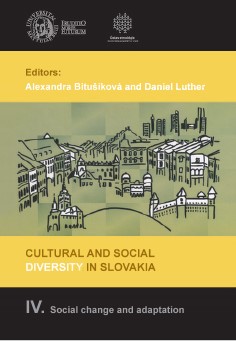ADAPTATION OF FAMILIES FORCIBLY DISPLACED UNDER THE ACTION B: THE PAST AND THE PRESENT
ADAPTATION OF FAMILIES FORCIBLY DISPLACED UNDER THE ACTION B: THE PAST AND THE PRESENT
Author(s): Jolana Darulová
Subject(s): Local History / Microhistory, Social history, Culture and social structure , Family and social welfare, Post-War period (1950 - 1989)
Published by: SAV - Slovenská akadémia vied - Ústav etnológie a sociálnej antropológie Slovenskej akadémie vied
Keywords: Action B; Communist idea; changing the social structure of the society; 1952-1953; Banská Štiavnica; Banská Bystrica; Families;
Summary/Abstract: The central topic of the paper is Action B which was aimed to implement the Communist idea of changing the social structure of the society and adapting it to the needs of the new regime. Action B was supposed to definitely cleanse towns from enemies, and help to solve the housing problem. It was carried out by means of violent displacement of whole groups of inhabitants from both big and smaller Czech and Slovak towns. Action B was carried out from 1952 to 1953, and formed part of controlled activities in the period of the dictatorship of the proletariat when the foundations of the Communist regime were laid down (1948-1953). “The new regime was bom with the denial, disruption, and liquidation of the principles on which it was built... the destruction of the society entered all fields of social life” (Kaplan 1991: 146). At the same time, it was a period which forced individuals to adapt to the new reality and seek their place in it. According to Babal (2009: 22), “the displacements of people in the post-war period was nothing uncommon in the territory of the Czechoslovak Socialist Republic (CSR), and were executed back to 1938 (displacement of citizens of Czech nationality shortly after the birth of the Slovak State, or Slovak Republic; later displacement of the Jewish population, and of Germans and Hungarians after the re-birth of the CSR). After the regime change in February 1948, the displacement of persons smoothly followed the previous development, and targeted other groups of inhabitants. We could say that, in a certain way, the population ‘got used’ to displacements executed in the period 1938-1948. It affected farmers, churches (especially the Catholic Church), inhabitants of bordering areas, and others - individuals and their families.”
Book: Cultural and social diversity in Slovakia iv. social change and adaptation
- Page Range: 83-92
- Page Count: 10
- Publication Year: 2013
- Language: English
- Content File-PDF

